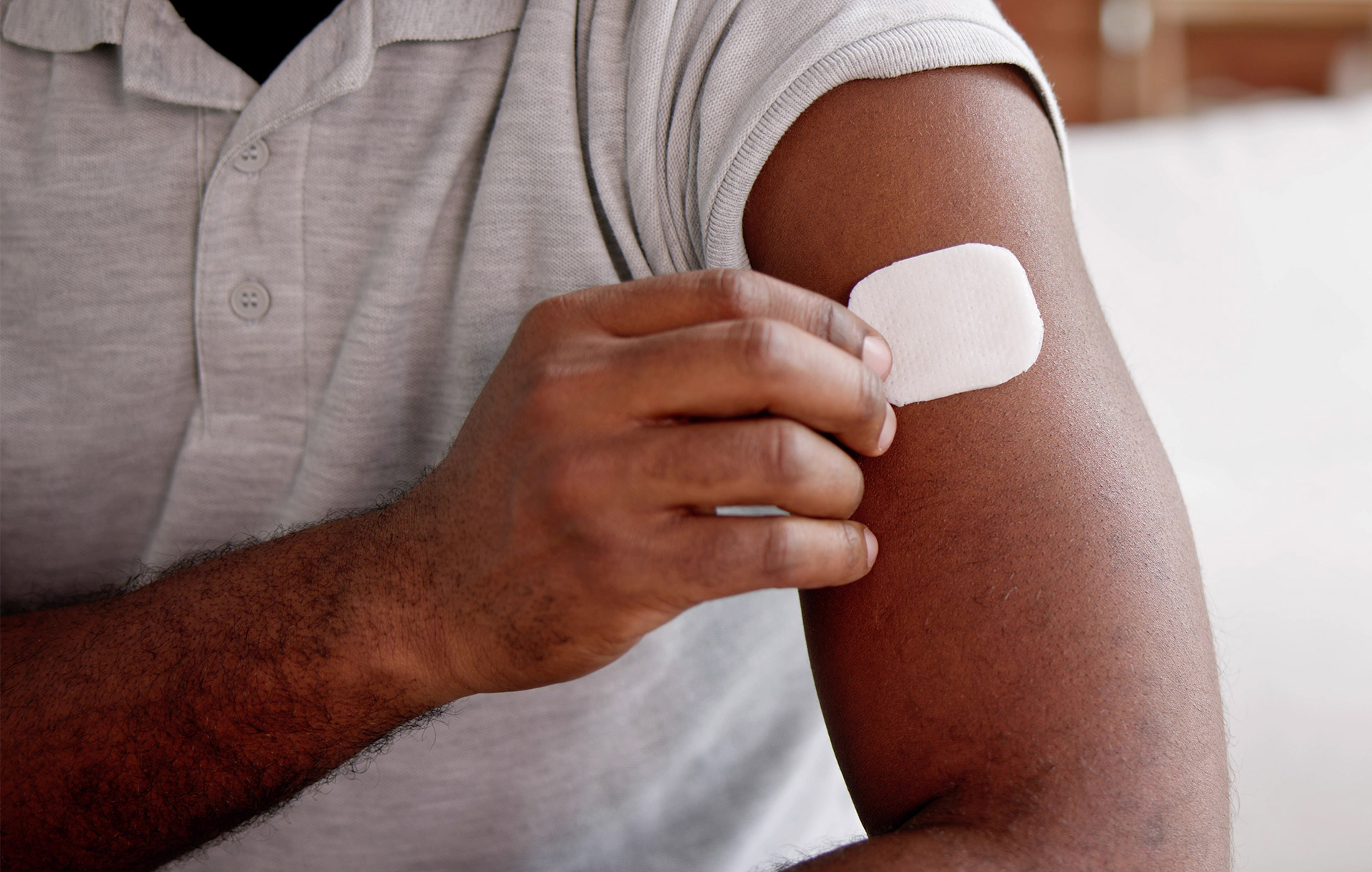Transdermal drug delivery systems (TDDSs) use active pharmaceutical ingredients (APIs) to deliver therapeutic healing.1 However, many of these APIs are photosensitive and degrade when exposed to UV light sources. One of the most common ways TDDSs combat photodegradation is to use a blend of synthetic adhesives with APIs to deliver drugs while remaining adhered to a targeted site. These synthetic adhesives can lead to negative effects such as skin irritability and inconsistent drug delivery. A promising alternative that can circumvent these problems is electrospinning antibacterial nanofibers with photostable nanoparticles. These nanoparticles would be chemically stable and inert with inherent antibacterial and UV-blocking properties.
Transdermal Drug Delivery Systems:
Transdermal drug delivery systems release active ingredients into the body at a predetermined rate using a medicated patch applied to the skin. TDDS are used in various therapeutic areas including pain management, hormone replacement therapy, cardiovascular therapy, neurological disorders, migraine management, motion sickness prevention and manage symptoms of overactive bladder.
The rate at which the active ingredients are released is vitally important for promoting and maintaining adequate healing for targeted areas of the body to ensure the necessary dosage is delivered over time. It is also vitally important that the area of contact with the skin is homogeneous across the intended area for even dosing because the release is predetermined. Developing a transdermal system requires careful consideration of the drug’s physicochemical properties, formulation, and the design of the delivery system. Also, prolonged exposure to the adhesive or drug can cause skin irritation, dermatitis, or allergic reactions in some patients.
Electrospinning:
Electrospinning is a technique that creates fibers or particles by extruding a polymer solution into a highly charged electric field. This solution is propelled to a collector that is either grounded or negatively charged. As the solution travels through the electric field, solvents are evaporated from the solution, and the polymer is deposited onto the collector. The physical characteristics of these fibers are heavily influenced by the electrospinning parameters used, producing materials whose surface area, fiber diameter, and alignment can be tuned with a high degree of control. API’s and nanoparticles can be introduced into polymeric matrices and used to fabricate electrospun mats whose properties are highly tunable. By incorporating APIs into these high surface area fibers, it is possible to tune the rate of release into the body across a homogeneous area. When coupled with the addition of UV-blocking nanoparticles, it becomes possible to shield these photosensitive APIs from degradation, potentially increasing the lifespan of the medical device.
Electrospun Nanofiber/Nanoparticle Transdermal Drug Delivery Systems
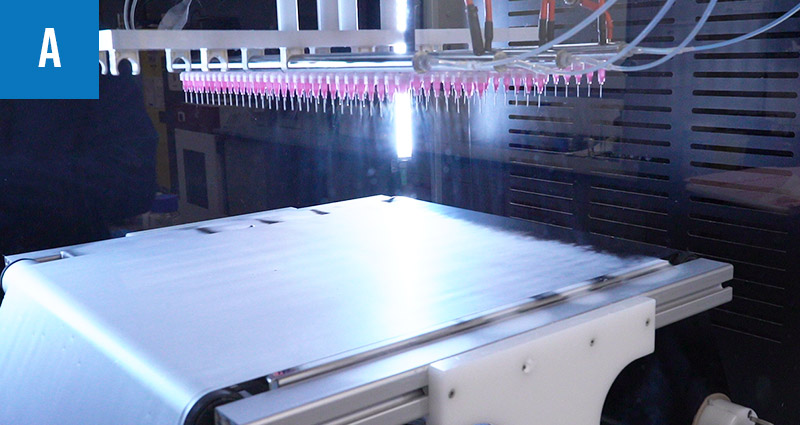
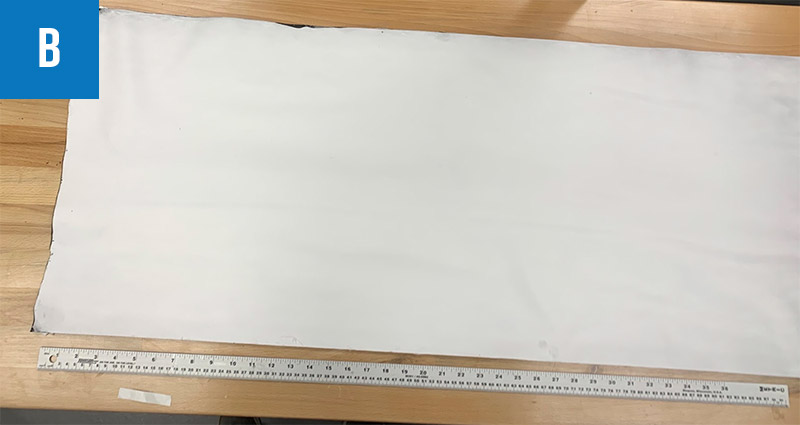
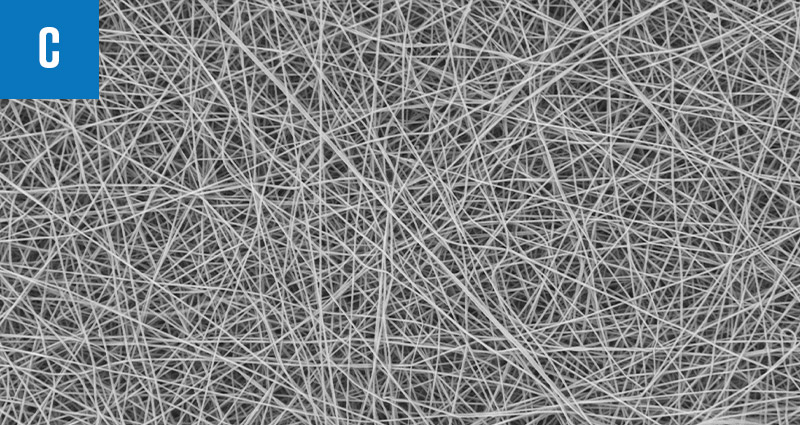
Electrospun TDDSs can be comprised of nanofibers that can range from tens of nanometers to several microns in diameter. The size of these fibers promotes a high surface-to-volume ratio, promoting excellent contact and adhesion between the surface of the skin and the material at an adjustable loading rate.
Polyacrylonitrile (PAN) is a commonly electrospun polymer that boasts a wide range of biomedical applications thanks to its high surface area, tunable thermal/mechanical stability, and biocompatibility.2 PAN nanofiber sheets can be fabricated with uniform fiber morphologies and in significant quantities as shown in Figure 1 (A-C).
Solutions of PAN in DMF with TiO2 particles were used to fabricate composite nanofibers. TiO2 has been demonstrated to have anti-microbial and UV-blocking properties.3 A homogenous fiber mat with nanoparticles dispersed throughout the entirety of the sheets was fabricated. Scanning electron microscopy (SEM) imaging reveals individual particles decorating the individually spun fibers, ensuring fibers are laced with the UV-blocking nanoparticles (Figure 2).
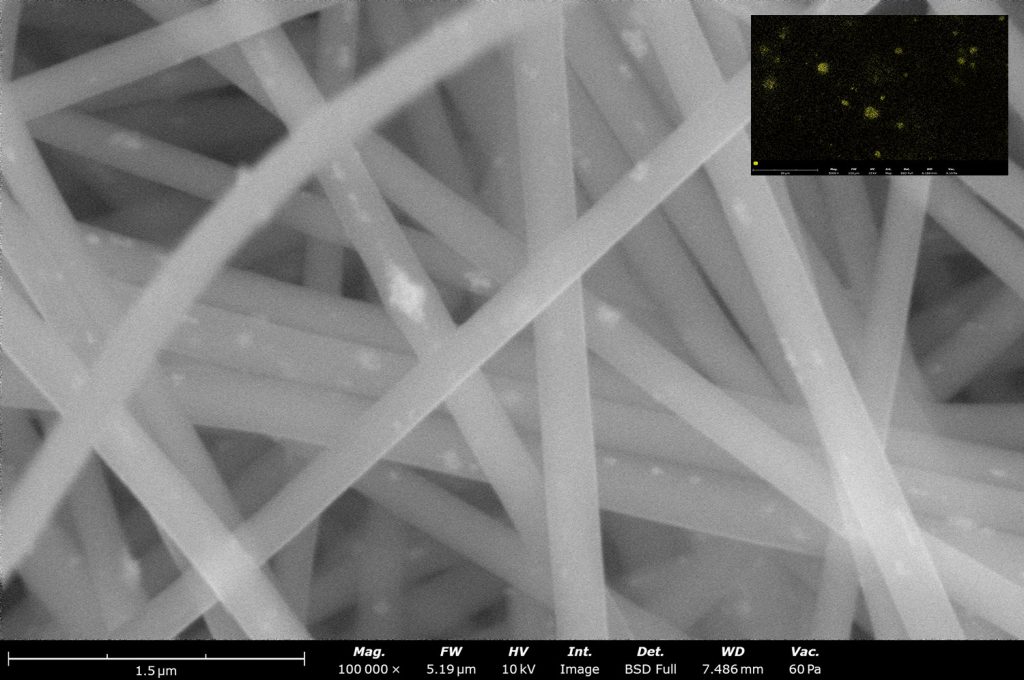
Elemental analysis was performed using energy dispersive x-ray spectroscopy (EDX) to confirm the composition of particles observed on the fiber mats and check for distribution (Figure 2, Inset). The concentration of the TiO2 particles in the polymer solution was varied resulting in varying distribution of particles in the nanofibers. This revealed that the concentration of nanoparticles can be controlled and adequately dispersed throughout the resulting fiber mat.
To demonstrate the loading of API’s in electrospun fibers, a blended solution of hyaluronic acid polyethylene oxide (PEO) was used to fabricate sheets of nanofibers. SEM images of the resulting fibers showed uniform nanofibers (Figure 3A). FTIR analysis revealed the nanofibers consisted of PEO and hyaluronic acid (Figure 3B).
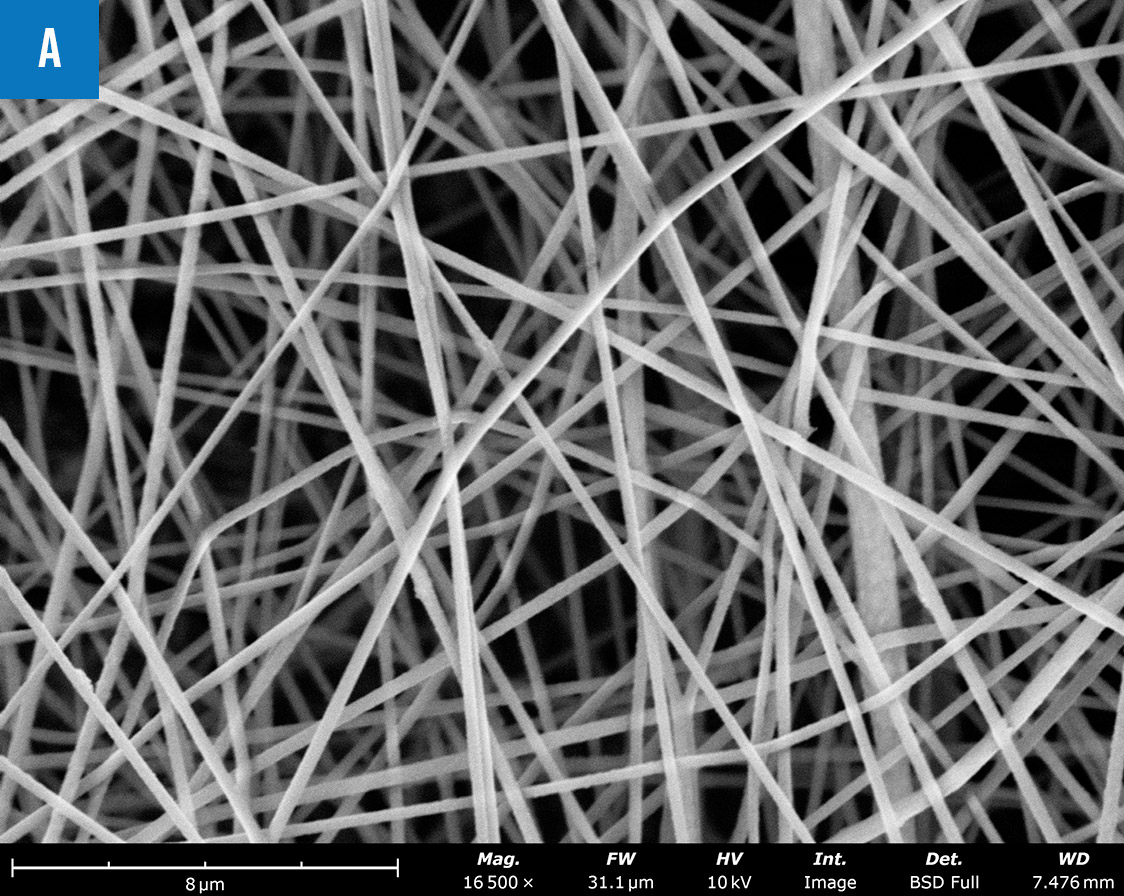
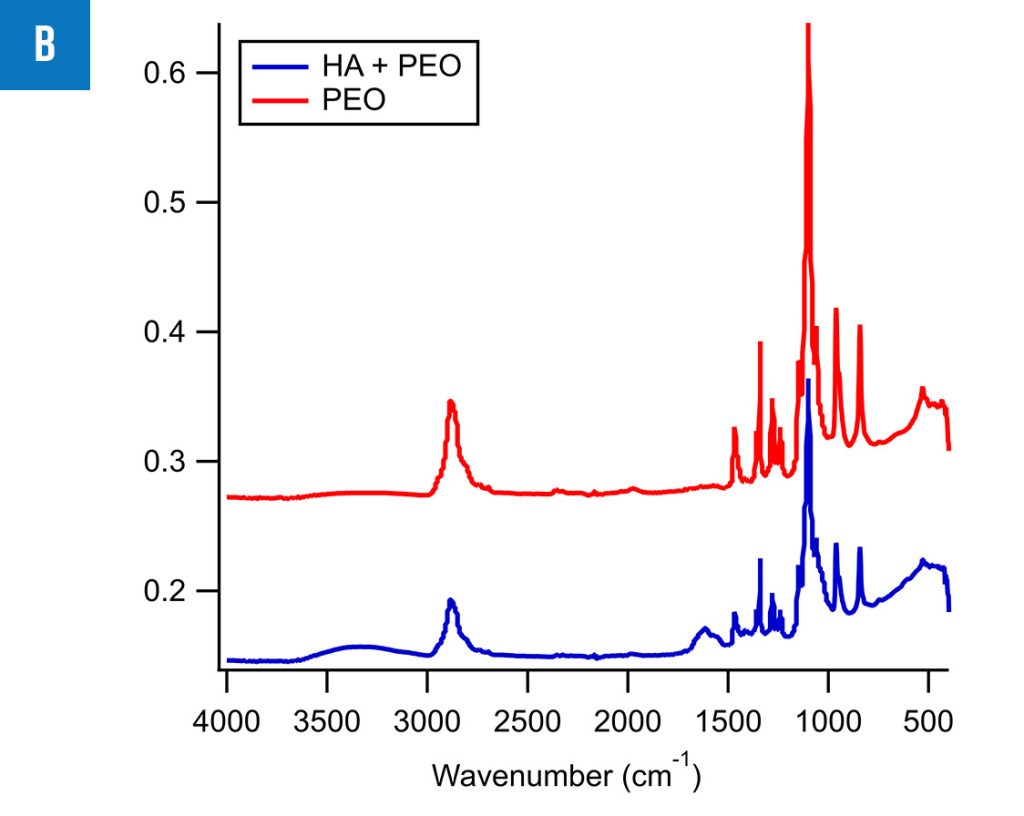
This demonstrates the feasibility of fabricating electrospun material with incorporated nanoparticles to generate a highly tunable, naturally antibacterial, and photostable transdermal drug delivery systems.
Conclusion:
The use of synthetic adhesives in traditional TDDSs comes with the risk of causing skin irritability and inconsistent drug delivery. Utilizing electrospinning is a viable alternative to overcoming these challenges when fabricating transdermal drug delivery systems. The high surface area of the electrospun fiber mats allows for excellent skin contact and can be optimized for even drug distribution across the target site. The use of antibacterial, UV-blocking nanoparticles prevents photodegradation of costly active ingredients and can be used to extend the longevity of the devices. EDX analysis and mass loading present evidence that electrospinning with nanoparticles is a viable option for TDDS fabrication.
References:
- Woo Yeup Jeong, Mina Kwon, Hye Eun Choi, and Ki Su Kim. Recent advances in transdermal drug delivery systems: a review. Biomaterials Research. 2021, Vol 25, Issue 1 DOI: 10.1186/s40824-021-00226-6 ↩︎
- Danagody, B., Bose, N. & Rajappan, K. Electrospun polyacrylonitrile-based nanofibrous membrane for various biomedical applications. J Polym Res 31, 119 (2024). https://doi.org/10.1007/s10965-024-03965-x ↩︎
- Rashid, M.M.; Forte Tavčer, P.; Tomšič, B. Influence of Titanium Dioxide Nanoparticles on Human Health and the Environment. Nanomaterials 2021, 11, 2354. https://doi.org/10.3390/nano11092354 ↩︎

